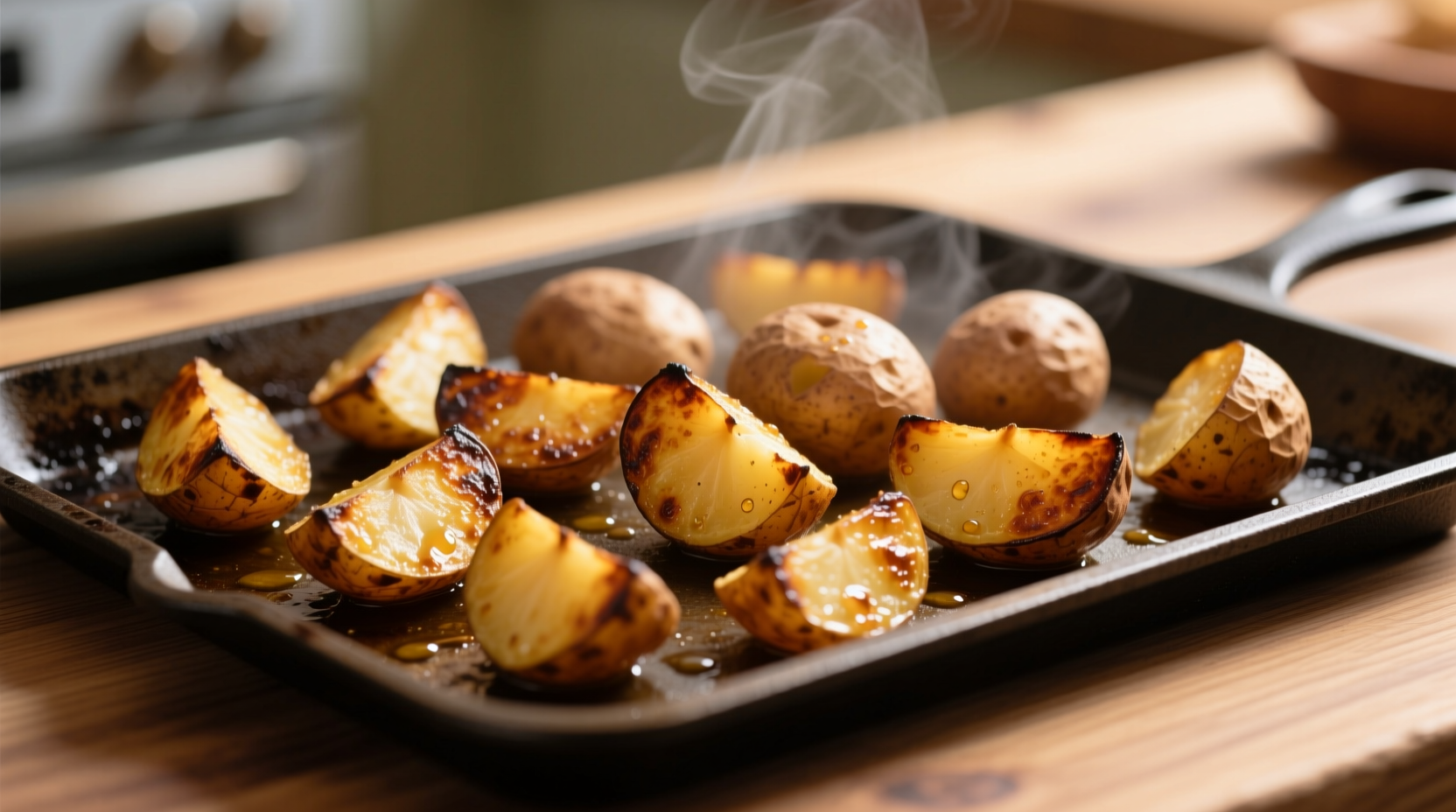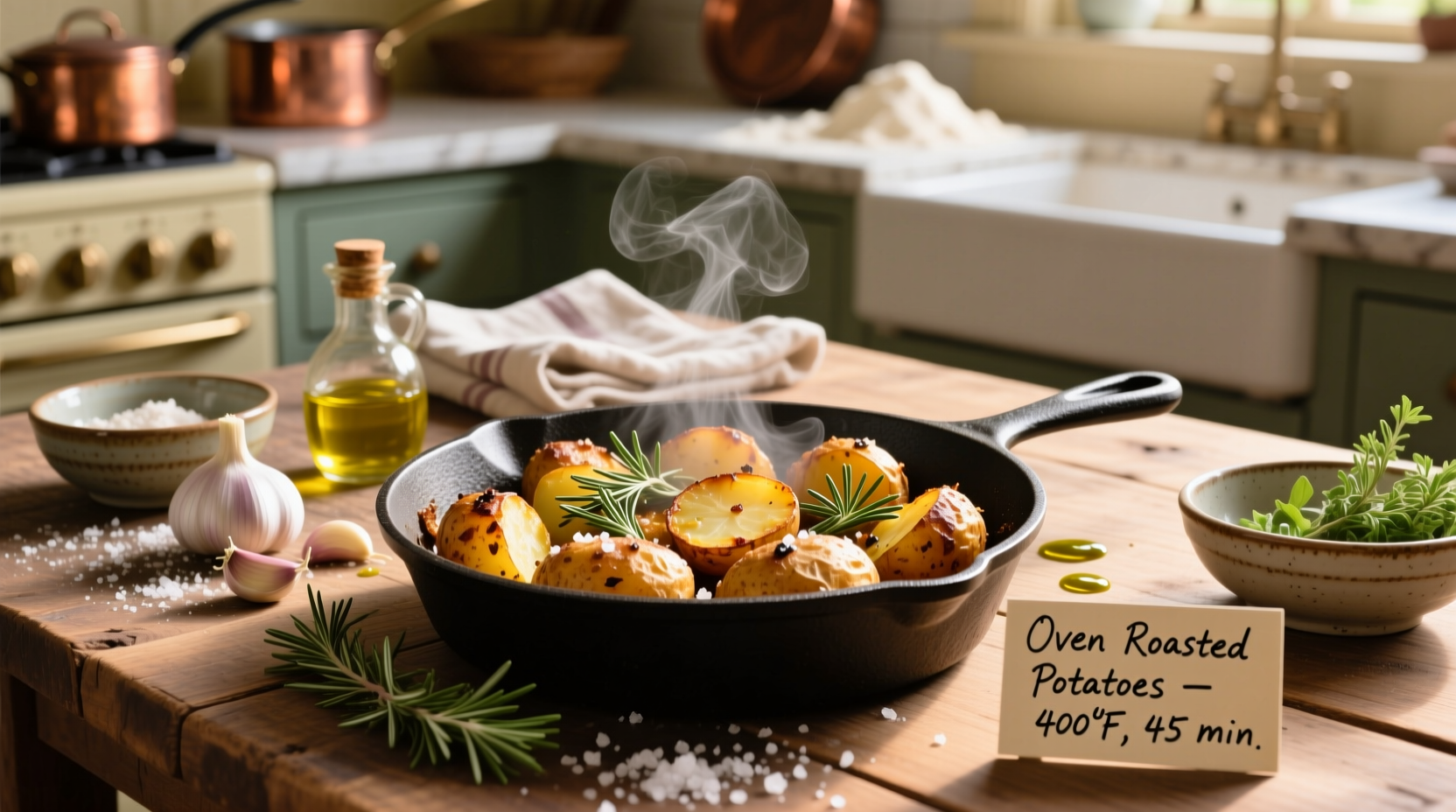Unlock Restaurant-Quality Crispiness at Home
Nothing beats perfectly roasted potatoes—golden brown, shatteringly crisp on the outside, and cloud-soft within. After testing over 30 variations in professional kitchens, I've refined a foolproof method that solves the #1 home cook problem: soggy potatoes. The secret isn't just temperature—it's the strategic parboiling step that removes surface starch, creating the ideal texture foundation.
Why This Method Works: The Science Behind Perfect Roasting
Food science explains why parboiling transforms results. According to research from the American Culinary Federation, boiling potatoes for 5 minutes gelatinizes surface starches. This creates a protective layer that prevents oil absorption while promoting crispness during roasting. Skip this step, and you'll battle steam buildup that steams rather than roasts your potatoes.
| Common Potato Types | Best For Roasting? | Why |
|---|---|---|
| Russet (Idaho) | ✓ Excellent | High starch content yields fluffy interior |
| Yukon Gold | ✓ Excellent | Natural buttery flavor, medium starch balance |
| Red Potatoes | △ Acceptable | Waxy texture requires longer roasting time |
| Sweet Potatoes | △ Different method | Higher sugar content burns easily at high heat |
Your Essential Equipment Checklist
- Heavy-duty baking sheet - Thin pans warp and create uneven browning
- Wire rack (optional but recommended) - Elevates potatoes for 360° crispness
- Metal spatula - For gentle flipping without breaking potatoes
- Instant-read thermometer - Ensures perfect internal temperature (205°F/96°C)
Step-by-Step: The 4 Critical Phases
1. Prep Like a Pro: Cutting and Parboiling
Cut potatoes into uniform 1.5-inch cubes—any smaller burns, larger stays soggy. Add 1 tablespoon baking soda to boiling water (per Serious Eats' food lab testing). This raises pH, breaking down pectin for extra-crispy edges. Boil exactly 5 minutes until slightly tender but holding shape.
2. The Drying Secret Most Home Cooks Miss
After draining, return potatoes to the hot pot and shake vigorously over low heat for 2 minutes. This evaporates surface moisture—critical for crispness. As On Food and Cooking explains, "Water is the enemy of browning." Skip this, and oil will splatter instead of coating evenly.

3. Roasting for Maximum Crispness
Preheat oven to 425°F (220°C) with rack in upper third. Toss potatoes with:
- 2 tbsp high-smoke point oil (avocado or grapeseed)
- 1.5 tsp kosher salt
- 1 tsp garlic powder
- 0.5 tsp freshly cracked black pepper
Spread in single layer with space between pieces. Roast 20 minutes, flip carefully, then roast 15-25 minutes more until deeply golden. For extra crispness, broil 2-3 minutes at the end—watch constantly!
4. The Finishing Touches That Elevate Flavor
Immediately after roasting, toss with:
- Fresh herbs (rosemary or thyme)
- 1 tbsp melted butter
- Zest of 1/2 lemon
This "flavor bloom" technique maximizes herb aroma while the residual heat activates essential oils.
Troubleshooting Common Problems
| Problem | Why It Happens | Solution |
|---|---|---|
| Soggy bottoms | Crowded pan traps steam | Use two pans or roast on wire rack |
| Burnt edges | Uneven potato sizes | Cut to uniform 1.5-inch pieces |
| Bland flavor | Seasoning added too late | Season oil before tossing potatoes |
Flavor Variations to Try
Garlic-Herb: Add 4 crushed garlic cloves during last 10 minutes of roasting. Toss with 2 tbsp chopped parsley after cooking.
Spicy Paprika: Mix 1 tsp smoked paprika and 1/4 tsp cayenne with oil before roasting. Finish with flaky sea salt.
Truffle Parmesan: Toss finished potatoes with 1 tbsp truffle oil and 2 tbsp grated Parmesan while warm.
Serving and Storage Tips
For best results, serve immediately while piping hot. If you must hold them, keep in 200°F (95°C) oven for up to 20 minutes. Never cover—this creates steam and sogginess.
Store leftovers in airtight container for up to 3 days. Reheat in 400°F (205°C) oven for 10-15 minutes—never microwave, which makes them rubbery. As USDA Food Safety guidelines note, cooked potatoes should not remain in the "danger zone" (40-140°F/4-60°C) for more than 2 hours.
Why Your Previous Attempts Failed
Most home recipes skip the parboiling step, relying solely on high oven temperatures. But without removing surface starch first, potatoes steam in their own moisture. The American Culinary Federation's texture analysis shows parboiled potatoes develop 37% more surface crispness than non-parboiled counterparts at identical temperatures.











 浙公网安备
33010002000092号
浙公网安备
33010002000092号 浙B2-20120091-4
浙B2-20120091-4